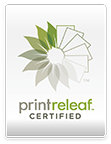
When it comes to storing stem cells from your newborn baby, you may have heard of two options: cord blood and cord tissue. Both options can provide valuable stem cells for potential future use, but there are some differences between the two. In this blog post, we’ll explore the differences between cord blood and cord tissue and help you determine which option may be the right choice for you and your family.
What is Cord Blood?
Cord blood is the blood that remains in the umbilical cord after a baby is born. It contains valuable hematopoietic stem cells (HSCs) that can be used to treat a variety of diseases and conditions, including blood disorders, immune system disorders and certain cancers. The main use to date has been in the treatment of blood and bone marrow disorders including malignant diseases such as leukaemia and non-malignant conditions such as sickle cell disease. These stem cells are collected immediately after birth and stored in a special facility for potential future use.
There are over 85 conditions where a cord blood stem cell transplant can be used, including:
- Blood cancers e.g. Leukaemia & Lymphoma
- Blood disorders e.g. Sickle Cell Disease & Thalassemia
- Metabolic disorders e.g. Krabbe Disease
- Immune conditions e.g. Severe Combined Immunodeficiency (SCID)
- Solid tumours e.g. Neuroblastoma or Retinoblastoma
What is Cord Tissue?
Cord tissue refers to the connective tissue and so-called “Wharton’s jelly” that surrounds the blood vessels in the umbilical cord. It contains a type of stem cell, called mesenchymal stem cells (MSCs). MSCs are also found in the cord blood but they are particularly numerous within the Wharton’s jelly. These cells have the potential to become a variety of different cell types, including bone, cartilage and muscle cells meaning they can be used to treat or regenerate diseased or injured tissue. More importantly, it has been shown that they can assist with the body’s healing process at the site of damage as they possess anti-inflammatory abilities and can also damp down over active immune responses.
Here are some examples of the many conditions where cord tissue stem cells are currently being used in clinical trials:
- Lupus
- Diabetes
- Covid-19
- Chronic autoimmune diseases such as Crohn’s disease & Rheumatoid arthritis
- Sports injuries e.g. cartilage, ligament and bone repair
- Osteoarthritis
- Cardiovascular disease
- Liver disease
- Skin injuries e.g. burn treatments, wound treatments and skin grafts
- Spinal cord injury
- Traumatic brain injury
- Stroke
- Amyotrophic Lateral Sclerosis (ALS)
- Eye treatments
- Autism
Differences Between Cord Blood and Cord Tissue
The main difference between cord blood and cord tissue is the type of stem cells they contain. Cord blood contains hematopoietic stem cells (HSCs) which can develop into blood and immune cells, and also some mesenchymal stem cells (MSCs). Cord tissue on the other hand, contains no HSCs but is a very rich source of MSCs, which can develop into a variety of different cell types and produce proteins that promote healing of tissues and organs.
Which Option is Right for You?
If you are interested in the possibility of banking stem cells for the treatment of malignant or non-malignant blood disorders, then cord blood banking may be a good choice.
If you’re interested in the potential of regenerative medicine using mesenchymal stem cells, cord tissue banking may be a good option. It’s important to note that the need for treatment can’t be predicted or expected, meaning that by storing your baby’s stem cells you are potentially safeguarding their future. It’s important to note that stem cell collection can be compatible with delayed cord clamping, which isn’t something everybody is aware of.
At Smart Cells, we offer both cord blood and cord tissue banking, as well as combined banking options. Our expert team can help you determine which option is right for your family’s needs and answer any questions you may have about the stem cell banking process. We offer affordable packages and competitive pricing to make stem cell banking more accessible for more families.
In conclusion, both cord blood and cord tissue banking offer valuable stem cells for potential future use. Understanding the differences between the two can help you make an informed decision about which option is right for you and your family’s needs.
You can read more about the differences of cord blood and cord tissue here.
Written by our Scientific Director, Dr Ann Smith. Not to be replicated without permission ©



